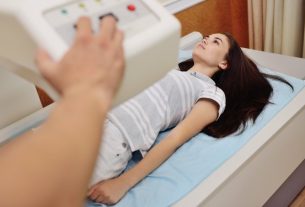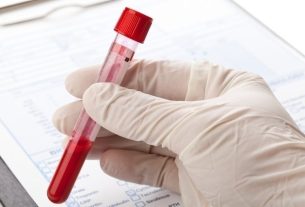Casts are structures formed exclusively in the kidneys that are not often identified in the urine of healthy people. Therefore, when cylinders are observed in the urinalysis, it may indicate that there is some change in the kidneys, be it infection, inflammation or destruction of the renal structures, for example.
The presence of cylinders is verified through a urine test, the EAS or type I urine test, in which through microscopic analysis it is possible to observe the cylinders. Normally, when the presence of casts is verified, other aspects of the exam are also altered, such as leukocytes, number of epithelial cells and red blood cells, for example. See how to understand the urine test.

What can it be
Depending on the place of formation and constituents, the casts can be considered normal, however when large quantities of casts are verified and other changes are identified in the urinalysis, it is important that an investigation is carried out, as it may be indicative of more serious changes.
The main types of casts in urine and their possible meaning are:
1. Hyaline cylinders
This type of cylinder is the most common and is basically formed by the Tamm-Horsfall protein. When up to 2 hyaline casts are found in the urine, it is normally considered normal, and may occur due to extensive physical activity, dehydration, excessive heat or stress. However, when several hyaline casts are seen, it may be indicative of glomerulonephritis, pyelonephritis or chronic kidney disease, for example.
2. Hematic cylinder
This type of cylinder, in addition to the Tamm-Horsfall protein, is formed by red blood cells and is normally indicative of damage to any structure of the nephron, which is the functional unit of the kidneys responsible for producing urine.
It is common that in addition to cylinders, the urine test may indicate the presence of proteins and numerous red blood cells. In addition to being indicative of kidney problems, hematic casts can also appear in the urine test of healthy people after playing contact sports.
3. Leukocyte cast
The leukocyte cast is formed mainly by leukocytes and its presence is normally indicative of infection or inflammation of the nephron, and is generally associated with pyelonephritis and acute interstitial nephritis, which is a non-bacterial inflammation of the nephron.
Although the leukocyte cylinder is indicative of pyelonephritis, the presence of this structure should not be considered the sole diagnostic criterion, and it is important to evaluate other examination parameters.
4. Bacterial cast
The bacterial cylinder is difficult to visualize, however it is common to appear in pyelonephritis and is formed by bacteria linked to the Tamm-Horsfall protein.
5. Epithelial cell cylinder
The presence of epithelial cell casts in urine is usually indicative of advanced destruction of the renal tubule, but may also be associated with drug-induced toxicity, exposure to heavy metals, and viral infections.
In addition to these, there are also granular, waxy and fatty cylinders, the latter being formed by fat cells and is generally associated with nephrotic syndrome and diabetes mellitus. It is important that the result of the urine test is evaluated by the doctor, especially if the report indicates the presence of cylinders. This way, the doctor will be able to investigate the cause of the cylinder and begin the most appropriate treatment.
How cylinders are formed
The cylinders are formed inside the distal convoluted tubule and the collecting duct, which are structures related to the formation and elimination of urine. One of the main constituents of the casts is the Tamm-Horsfall protein, which is a protein excreted by the renal tubular epithelium and which is naturally eliminated in the urine.
When there is greater elimination of proteins due to stress, extensive physical activity or kidney problems, the proteins tend to stick together until a solid structure is formed, the cylinders. During the formation process, it is possible that elements present in the tubular filtrate (which is later called urine) are also incorporated, such as epithelial cells, bacteria, pigments, red blood cells and leukocytes, for example.
After the formation of casts, the constituent proteins detach from the tubular epithelium and are eliminated in the urine.
See more details about how urine is formed.
Bibliography
- MCANINCH, Jack W.; LUE, Tom F. Smith and Tanagho General Urology. 18 ed. Porto Alegre: Artmed, 2014. 51-52.
- STRASINGER, Susan K.; DI LORENZO, Marjorie S. Urianalysis and body fluids. 5 ed. United States: E. A Davis Company, 2008. 102-110.
- KAYSER, Melissa. Microscopic Urine Examination. Available at: <http://docente.ifsc.edu.br/melissa.kayser/MaterialDidatico/Analises_Clinicas/4.4%C2%AA%20Aula%20Exame%20Microsc%C3%B3pico%20da%20Urina.pdf>.

Sign up for our newsletter and stay up to date with exclusive news
that can transform your routine!
Warning: Undefined array key "title" in /home/storelat/public_html/wp-content/plugins/link-whisper-premium/templates/frontend/related-posts.php on line 12
Warning: Undefined array key "title_tag" in /home/storelat/public_html/wp-content/plugins/link-whisper-premium/templates/frontend/related-posts.php on line 13



